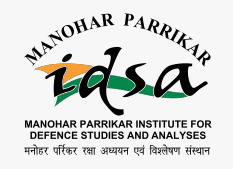India’s Internal Security Challenges
Shri N N Vohra, Shri K Santhanam, Director IDSA, Ladies and Gentlemen:
- Ved Marwah
- October 2003
The Centre focuses on issues that challenge India’s internal security. Secessionist movements based on ethnic identities in the Northeast and Jammu & Kashmir have been contesting the Indian state through violent means for decades. The Left Wing Extremism movement based on Marxist-Leninist ideology is engaged in a struggle to overthrow the democratic structure of the Indian state. Intermittent terrorist attacks perpetrated by foreign and home grown terrorist groups have been disrupting peace and political order in the country. Infiltration, illegal migration, and trafficking of arms and narcotics are not only breaching the country’s international borders but are also aggravating its security situation. The research efforts of the Centre are focused on analysing the trends, patterns, causes, and implications of these threats and challenges, and suggesting policy alternatives. The Centre’s research agenda includes: left wing extremism, insurgencies in the Northeast India, cross border terrorism and militancy in Jammu and Kashmir, global and national trends in terrorism, management of India’s international borders and security of its coasts.
The Centre also undertakes various projects entrusted by the Ministry of Home Affairs and the National Security Council Secretariat on matters internal security. The Centre has a mix of civilian scholars and officers deputed from the armed forces and central armed police forces.
The Centre has a bilateral agreement to collaborate with the Border Security Forces’ Institute for Border Management and Strategic Studies.
No posts of Books and Monograph.
Shri N N Vohra, Shri K Santhanam, Director IDSA, Ladies and Gentlemen:
Assam, one of the seven states of the northeastern region of India, has long remained one of the most volatile and sensitive regions in the country because of the problems of insurgency, ethnic conflict, pressure of migration, underdevelopment etc. Bodos, the largest plains tribe of Assam started an armed struggle for a separate state in the mid-1980s. This armed struggle led to ethnic cleansing of the non-Bodos along the north bank of the Brahmaputra.
Winning hearts and minds through the Civic Action Programme (CAP) and the Media/Perception Management Plan is an important element in combating LWE propaganda.
With improved manageability of support forces like ITBP on the Line of Actual Control in the Arunachal segment, the Army gains some flexibility and cushion time for intervention should the need arise.
The external linkages of the Maoists are wide, stretching from Latin America to South East Asia. These linkages have, essentially, given them visibility and propaganda, and very occasionally weapons.
For a state long thought to be a role model to other North-eastern states, Meghalaya has seen a steady rise in insurgency in the last few years. The Garo National Liberation Army has clearly emerged as a potent threat to security in Meghalaya and parts of Assam.
It is important to generate understanding among the youth about the basic concept of national security and the impact it has on human security and economic growth.
The problem of educated unemployment is mainly two fold, firstly, scarcity of government jobs, and secondly, the, virtual lack of any other employer in Manipur other than the government.
The Centre needs to focus on setting up mechanisms to ensure rehabilitation of displaced persons and surrendered militants as well as their participation in governance
The Naga peace accord is a historic step. It needs to be followed up by correct policy interventions that serve to undercut the relevance of the Kuki and Meitei insurgencies and thus usher in peace in Manipur.
The Naga Peace Accord has implications for Manipur and it is important that these are understood and necessary policy interventions are considered.
Women join Maoist ranks for a variety of reasons: impressionable age, social milieu and circumstances, personal reasons, influence of kin or family and the inspiration of ideology.



